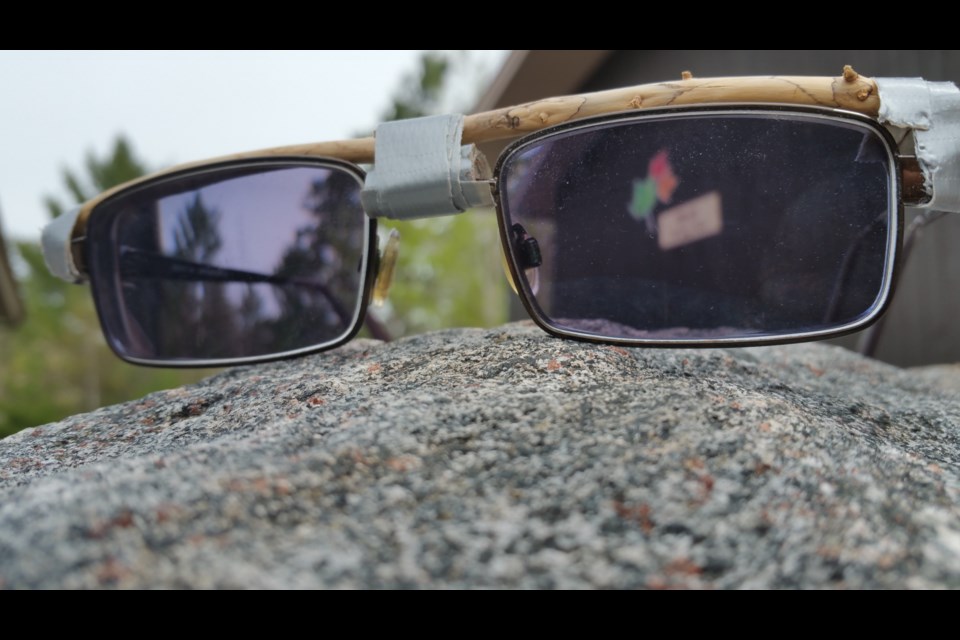If you are a motorized or non-motorized recreationalist, don’t leave home without it. For peace of mind include duct tape on your planning and emergency checklist for any back roads or back waters jaunt. We have adhered ourselves to it.
Since it was invented more than 70 years ago, the sticky silver adhesive with durable fabric backing has become a fix-all for everything from mechanical failures to cracked bones. Duct tape was originally invented by Johnson & Johnson during the Second World War for the military and was known as “duck” tape to repel water. Post war they got the bright idea to start selling it as a means to connect heating and air conditioning ducts; this caught on among home manufacturers and it became mainstay within the new homes being built. To allow for this usage, the tape's primary color was switched from green to silver, so that it would match the ducts.
Igneous, it is composed of three layers: The top layer is a plastic, polyethylene; the middle layer is a fabric mesh; the bottom layer is a rubber-based, pressure sensitive adhesive.
Duct tape author
The author of Don’t Forget the Duct Tape, Kristin Hostetter, was contacted. This pack-it-with-you pocket guide includes many creative uses for that most versatile of tools – duct tape – just when you need to remedy a leak in your tent, repair flapping boot soles, you'll find the solution here. Kristin is currently the Editor-in-chief of SNEWS a digital and print magazine that serves the people and companies of the outdoor industry. From 1994 through 2015 she served as ‘Backpacker’ magazine’s gear editor.
Her favourite tips: Make a sturdy zipper pull by threading a thin strip of duct tape through the slider, then wrapping the tails with more duct tape. For a more stable stove, cut a square of old closed-cell foam pad sized to fit the base of your backpacking stove. Wrap the foam generously with duct tape for insulation and you have a stable cooking platform that works great in the snow.
We know in 1970 the Apollo 13 astronauts retrofitted carbon dioxide filters with duct tape, which saved their lives.
Here is a smattering of what readers have told Kristin:
- “A few years ago, my shorts ripped in the rear on the second day of a week-long trip. One piece of duct tape in the inside, one on the outside and the shorts held up for the rest of the trip. Nicely, I might add. And with style.”
- “It has to be one of the greatest inventions created by man. I personally will try to avoid using the tape on anything that I really care about like my sleeping pad or tent fly, etc….I have used as well on the bottom of my pants legs and gaiters to ward off bugs and protect against water. It works wonders on those people that snore and talk too much.”
- “We use it for just about everything and anything--on our heels to prevent blisters during ski trips, to tape together someone's face (over other bandages) who'd had a ski accident in the backcountry, repaired a guitar case, mended overbooties, repair a Plexiglas birdfeeder, and tape a ham radio rack to the dash of the car.”
Duct tape is now primarily manufactured by eight different companies. You should know this.
It varies in quality and price. If you want to know more, Google “best duct tape reviews.” The Gorilla Tape brand is known to be double the thickness of the other tapes. It rips very cleanly, it looks and feels like it has more adhesive and is very strong.
Some final tips from Kristin:
“I haven’t really done any side by side testing, but I have certainly used some crappy duct tape before. I bought a bunch of rolls at a low price, variety retailer type of store once, and they were so terrible — I couldn’t even get them to peel off the roll without separating, so now I only buy good stuff.”
"I still take it on every trip (leave the bulky roll at home and wrap around a water bottle, hiking stick, the extra paddle shaft or a tent pole repair sleeve), beware though, when used as a patch on synthetics for instance, duct tape leaves a residue.”
Duct tape can save you a lot of grief on the back roads and back waters. Car camper, boater, hiker or canoeist, transition to the metaphysical — it is more like a force, it has a dark side and a light side and can hold just about anything together; it will take you to a place of contentment when you reach into your pack or utility toolkit. The real magic here isn't duct tape, it's the amount of information the author has managed to pack in one little book for you and for me whose outdoor gear gets loved to death on the back waters and back roads.



